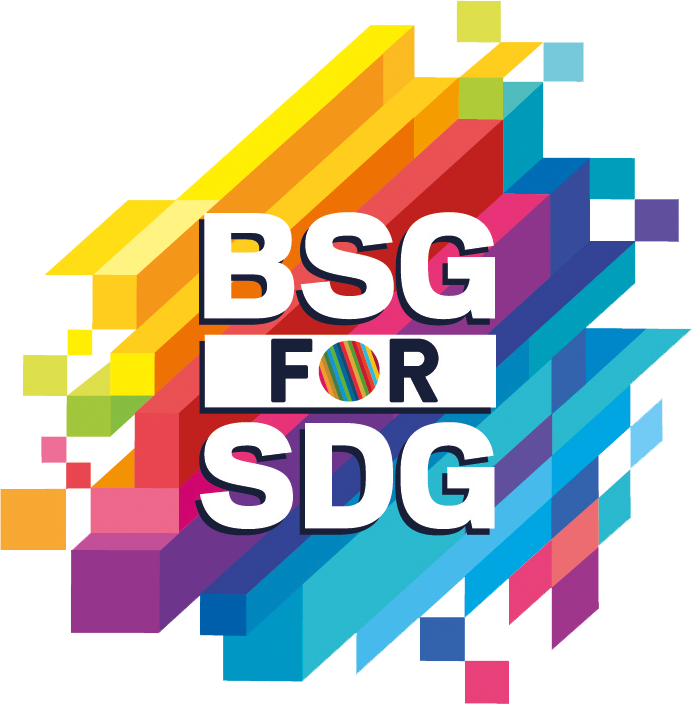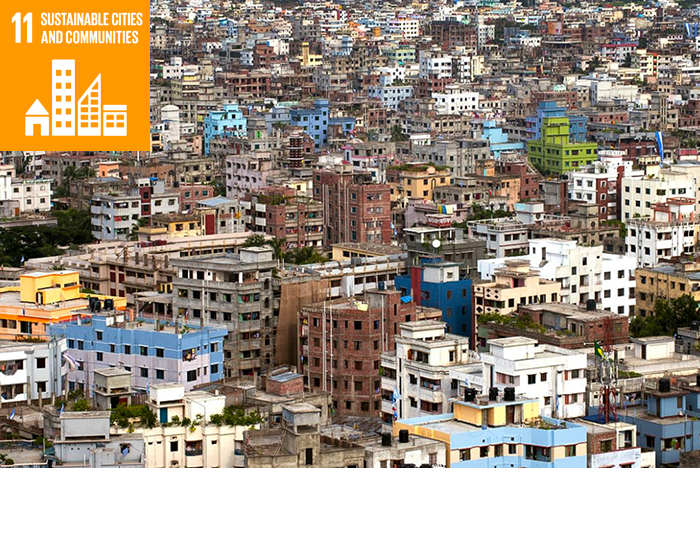Greetings from BSG Chairperson Mr. Vishesh Gupta
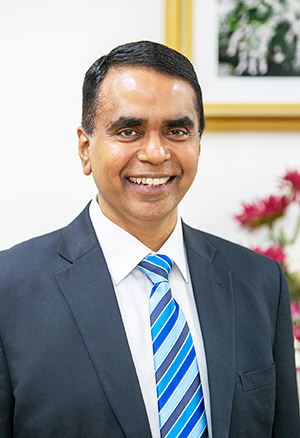
Dear Members of Bharat Soka Gakkai and All Readers,
The summer season is in its full glory, and now, we are also about to have the onset of monsoon showers. This is an ideal time for relaxation and siestas. However, technological advancement has made it quite convenient for us to keep working during these hot and humid summer months without the need for a break.
Even though we crossed 49 degrees Celsius temperature in some parts of India this year, and even though the average maximum temperature over Central India in April 2022 was recorded at 37.78 degrees Celsius – the highest ever in the last 122 years of Indian history, still, there is no slowing down for us. Our air-conditioned offices, homes and cars provide us the comfort to keep working without getting burnt out by the heatwave that India is currently witnessing.
However, we must take note that currently, just about 13 percent of Indian households have air-conditioning. More than three-quarters of our population has to bear the brunt of the rising temperatures without any respite. Besides, the more air-conditioning we use, the more we keep adding to global warming.
It makes one wonder, is there a way out of this vicious cycle? What can we as individuals do for our environment, our societies, and for the under-privileged who are suffering the most?
I truly believe that when all people in a community come together, we will be able to transform the place where we live into tranquil lands. When we recognize our shared spirit of solidarity with each other, we will be able to create a world where everyone is happy and free.
It is for this reason that the theme of the sixth issue of the ‘SUSTAINABLE’ Newsletter is ‘Community-based initiatives’. The idea behind this theme is that when people of a community put their minds together and take innovative initiatives at the local level, the whole community benefits from such sincere and noble actions, and thereby, the whole country transforms.
As SGI President Daisaku Ikeda shares that it is the “single-minded determination to create a groundswell of change through the solidarity of ordinary citizens” that helps us “to advance together for the resolution of crucial human challenges.”
The UN celebrates July 30th as the International Day of Friendship each year – a day that focuses on building “a shared spirit of human solidarity that takes many forms — the simplest of which is friendship” in order to confront the rising crises and challenges that our world is facing today “that undermine peace, security, development and social harmony among the world’s peoples.”
I hope that this sixth issue of the ‘SUSTAINABLE’ newsletter will help in understanding the true meaning of being a friend to our community. I hope it will help us learn about the crucial role we all can play in our communities; help us reflect on our behaviour towards each other, as members of a community; and it will empower us to take proactive action to transform the communities in which we live.
I am personally determined to celebrate the true spirit of friendship, by taking more proactive action in my community, for the place where we belong, is the true place of our mission.
I wish you and your family members the best of health in these hot summer months.
My best regards
Vishesh Gupta
BSG Chairperson
Human beings have an existential need to connect with one another. Our local community allows us to forge bonds of trust, friendship with our neighbours, and provide a sense of belongingness, responsibility and camaraderie. More than 2 years of living amidst the pandemic has brought home the irreplaceable role of our local community in our lives, hitting home the point that we cannot lead an isolated, insulated life.
The word ‘community’ derives from the Latin ‘communitas’, which in turn derives from ‘communis’, which means “common, public, shared by all or many.” Community building is a field of practices aimed at creating or enhancing a sense of community between individuals within a shared space (such as a neighbourhood) or with a common interest. Although traditionally community building is practised in a physical space, over the last decade or so, a number of virtual communities have popped up around a variety of interests such as peacebuilding, education, zero waste lifestyle etc.
The SDGs aim to directly improve the quality of life and livelihood at an individual and community level, and as such are a direct beneficiary of the sustainable development agenda. With its slogan “Think Global, Act Local,” the 2030 Agenda for Sustainable Development identifies local communities as co-implementers rather than simply beneficiaries of the SDGs. For example, Goal 17, indicators 16 and 17 on multi-stakeholder partnerships calls for “the inclusion of communities through partnerships with civil society; Goal 6b directly references the participation of communities in improving water and sanitation; and Goal 11.3 promotes civil society participation in urban planning and city management.”
In particular, SDG 11 aims to make cities and communities inclusive, safe, resilient and sustainable. Although cities occupy only 3% of the earth’s land, nearly 55% of the world’s population lives in them, while also accounting for 60-80% of energy consumption and 80% of carbon emissions. The task of creating peaceful and sustainable local communities, with all its challenges of waste management, accessible housing and transportation, burgeoning population, rise of violence and crime, demands a partnership between the relevant stakeholders – right down to the local communities consisting of ordinary people, whose very lives will be affected.
However, in many cases, a wide gap exists between the individual and their communities. Partnership with the local community and the people must go beyond tokenism and popular rhetoric. There is an urgent need to build greater awareness and engagement at a community-level to achieve the SDGs in each neighbourhoods, community centres, RWAs etc, and instil in people the confidence and empowerment to achieve this daunting goal. The complex and global problems we are facing today such as rapid climate change, famines, mass-migration, violent extremism, resource wars, biodiversity loss and economic volatility, manifest in the local communities in myriad ways. Therefore, it is utmost important to empower the people living in these communities, physical or virtual, and create a solid network of partners united in purpose.

Positive Peace
The concept of peace as ‘positive’ and ‘negative’ was coined by Norwegian sociologist Prof. Johan Galtung, also known as the father of peace studies. Positive peace, also known as structural peace, deals with creating the necessary social conditions for all people to thrive. It includes building bonds of trust and fraternity in the local community, providing quality education, public healthcare and decent employment opportunities to all; ensuring gender equality; eliminating corruption; and creating a sound business environment among other things. In short, factors that make a society worth living, that encourage positive relationships between people. Whereas, negative peace relates to the absence of violence (for example: through an immediate ceasefire, signing of a peace agreement etc).
Our local communities hold the space where this vision of positive peace can be actualised through building strong ties of friendship, mutual trust, peace in the community by treasuring our neighbours, celebrating our diversity, where each citizens feels valued and empowered to lead a contributive life, irrespective of their gender, age, ability, race, language etc.
 To Read
To Read
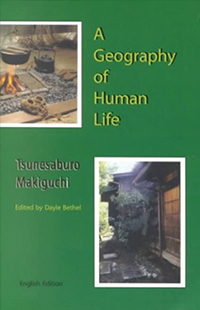
A Geography of Human Life by Tsunesaburo Makiguchi
The book, ‘A Geography of Human Life’ (Jp ‘Jinsei chirigaku’) was written by the noted Japanese geography educator and the founding President of Soka Gakkai, Tsunesaburo Makiguchi in 1903, when Japan’s imperialism and militaristic expanism was raging; and just four months before the outbreak of the Russo-Japanese war (1904-05). In this path-breaking book, Makiguchi approached the study of nature and the physical environment through the activities of human beings, their interrelationship and mutual impact. The book appealed for people to take a broader, universal perspective on things, transcending the narrow limitations of nationalism, and for peaceful coexistence between nations. As a founder of the Soka system of value creating education, Makiguchi strongly advocated for a half-day school system which would allow for a deeper integration of formal learning into the realities of children’s life as citizens of their local communities. He encouraged the students to explore their relationship with the natural environment and the local community, cultivating in them a sense of belongingness, respect and responsibility towards the community and the natural environment. This book is an insightful read for anybody looking to understand the man-nature relationship, and how we can expand our sense of belonging from local to global, without any contradictions.
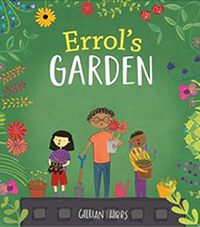
Errol’s Garden by Gillian Hibbs
Errol loves gardening, but there isn’t enough room in his flat to grow everything that he would like. When he discovers a secret but neglected space at the top of the apartment block, he has a wonderful idea, but to carry it out he’ll need some help. Surely the other residents will be too busy to help him realise his dream? Or just not interested enough? In this heart-warming tale of common purpose within a diverse community, Gillian Hibbs illustrates the power of the natural world to inspire and reward humanity within a seemingly inauspicious environment.
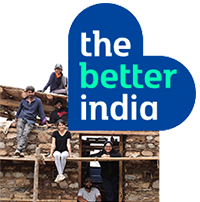
Stories of Community Initiatives on “The Better India”
Get inspired by these stories from across India on community initiatives – be it village development, to urban community gardens and community radio stations!
 To See
To See
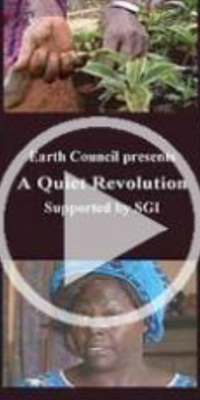
A Quiet Revolution: The Earth Charter and Human Potential
Watch three case studies of how ordinary citizens in India, Slovakia and Kenya took initiative in their communities to solve local environmental problems. Narrated by Academy Award-winning actress Meryl Streep, and featuring interviews with UN Secretary-General Kofi Annan and other experts, this 30-minute prize-winning film was produced by the Earth Council in cooperation with the United Nations Development Programme and the United Nations Environment Programme, and supported by Soka Gakkai International. This film was first shown at the 2002 World Summit on Sustainable Development in Johannesburg, South Africa.
Watch here
 To Listen
To Listen
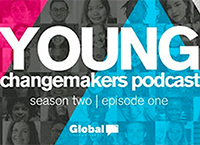
Young Changemakers Podcast
This podcast series contains stories of courageous young changemakers from across the world creating a lasting change in their communities. Get ready to be inspired by these youth – a reminder that you too can make a difference!
 To Play
To Play
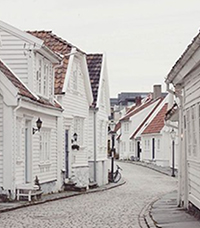
What Kind of Neighbour are You?
While we all want to have good neighbours around us, it’s equally important to be a good neighbour to others as well. Take this fun quiz to understand what kind of neighbour you are.
Play here
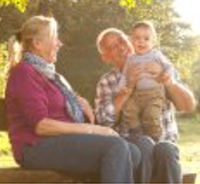
What Makes a Community Livable?
Take this fun quiz to identify some of the livability features that help people of all ages and life stages
Play here
The world today is confronted with complex challenges, and this seemingly unending doom scenario can lead to a feeling of ever more powerlessness. Hence our actions at the community level become so crucial. SGI President Daisaku Ikeda says, “To avoid becoming overwhelmed by these feelings, it is crucial to be grounded–to find a standpoint from which one can sense the impact of one’s actions and feel one is making concrete progress in transforming reality. This, in my view, is the role of the local community. A sense of responsibility toward the world or the future is not something that can be developed overnight, in isolation from the realities of daily living. If we cannot establish this within our immediate relationships and environment, we cannot hope to do so relative to the entire planet or the distant future.”
President Ikeda often refers to his dialogue in February 2005 with environmental activist Dr. Wangari Maathai (1940–2011) and the Green Belt Movement when highlighting the role of the community in engaging in the challenge of construction. This was a movement of planting trees that Dr. Maathai had initiated in her community in Kenya when she noticed visible environmental damage. The initiative began with the planting of just seven saplings, and eventually sparked a larger global movement that has continued after her passing and led to the planting of 15 billion trees worldwide. President Ikeda highlights that instead of being paralyzed by the acute distress Dr. Maathai felt on seeing what her community and the world stood to lose by continued deforestation, she transmuted that pain into the energy of construction that would enable her to actualise the world she hoped to see.
Referring to the example of the Green Belt Movement and the transformative potential of an individual’s actions in one’s community, President Ikeda highlights three points that led to the success of this community-based initiative:
- The consistent emphasis through sincere dialogue and engagement on ensuring that all participants in the community were genuinely convinced about what they were doing and why, and were also able to experience a sense of achievement because of the visible proof that their actions were contributing to actual change.
- Empowering each individual to live with a larger sense of purpose by inspiring people to take responsibility of their lives, their environment, governance and even the future. Recognising that the effort of planting trees and keeping forests intact was part of a larger mission towards building a sustainable society helped bring out the community’s limitless innate potential.
- The importance of encouraging and educating younger generations to carry on the movement. While it is possible for a single individual to initiate a movement, it requires teamwork, and for someone to carry forward the baton. Further, achieving a great goal requires many years and the cooperation of a large number of people.
Founding Soka Gakkai president and educator Tsunesaburo Makiguchi also highlighted the role of living a contributive way of life within one’s own community in his writings. As President Ikeda highlights, “Makiguchi saw the local community as the place where the various principles by which society and the world operate come together in directly observable form. His program of community studies was founded on this central awareness. Through it, he sought to instil in children the basic tenets of a contributive way of life–to work for the good of local and national society, and of humanity as a whole, based on a sense of the mutual interdependence of all life developed through the child’s interactions with the local community. Makiguchi did not consider the local community in the narrow sense of one’s hometown or native place, but rather, more broadly as the foundation for one’s present life–the place where one walks and lives, where one sees and hears and is moved by various events. Makiguchi understood our sense of belonging and rootedness as members of a local community to be the foundation for a consciousness of global citizenship.”
Drawing on President Makiguchi’s insights, President Ikeda suggests the following three qualities of community-based education that extend beyond the classroom, pro-actively involving people of all generations and all walks to life to learn together:
- “It should not stop at simply providing knowledge of the natural environment, customs and history of the local community, but should encourage feelings of affection for that community and the determination to treasure it.”
- “It should inspire a deep sense of appreciation for the ways in which the surrounding environment, including the productive and economic activities of others living in the community, enhances our lives: it should encourage daily actions based on that sense of appreciation.”
- “It should enable people to consider the issues of the local community in terms of what we must protect for the sake of future generations and the kind of society we must construct on their behalf, placing this at the heart of our way of life.”
Our role as protagonists in our communities becomes clear when we realise that we live in a complex web of relatedness with our surroundings – and thus there is no happiness that only we enjoy and no suffering that harms only others. President Ikeda highlights, “In this sense, we ourselves–in the place where we are at this moment–become the starting point for a chain reaction of positive transformation. We are able not only to resolve our personal challenges but also to make a contribution to moving our immediate environment and even human society in a better direction.”
Planting Trees to Foster the Future and Improve LivesSanjay Tak | Men’s Division | Agra
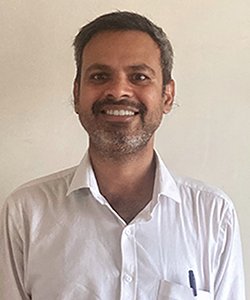
I work with the Agra Metro Project. Although I am from an engineering background, as I read about the Sustainable Development Goals, I fell in love with the idea of contributing to their accomplishment. I love plants and I own a farm in Nagaur District in the state of Rajasthan. But I wasn’t sure initially how I could contribute to the SDGs through my farm. I thought and studied hard on the matter. I came across this guidance of my mentor SGI President Daisaku Ikeda, who quotes the Nobel Laureate Wangari Maathai: “Planting a tree is planting life; it is fostering the future, fostering peace.”
I realised that it is my duty to contribute to my community through my work; to set a live example to the farmers of my district to move towards agroforestry – bring more agricultural land under tree plantation – increase rain – and improve groundwater table – and ultimately – improve the economic condition of people living in the area.
The primary challenge that the farmers face in Rajasthan is the scarcity of water. Since the traditional way of farming is restricted to monsoons only, therefore, the farmlands are not utilised for 75% of the year. The reason is decreasing rainfall and exploitation of groundwater. There is a direct relation between groundwater and the economic condition of people. The better the availability of water, the better the economic condition. To increase the availability of water, the only option was to receive more rain during monsoons.
Once, when I was on my way to my farm, I noticed that the government had planted Babul trees alongside the roads. The density of tree cover is such that even sunlight does not fall on the ground. The effect is that this area receives more rain than the neighbouring areas. As a result of this, the farmers there were engaged in agriculture round the year. And the average income was at least double than the farmers of my village.
To replicate the benefits in my area, I started planning to increase the tree cover. To do so, I visited neighbouring districts to study the agroforestry projects. My interaction with the farmers revealed that they were not interested in growing babul trees due to the long gestation period and low returns. I soon encountered an expert who advised me to grow Santalum Album – Sandalwood, along with Malabar Neem trees as hosts.
I started preparing my farm for plantation in the month of May 2021. Boundary wall was erected to protect plants from stray animals. A 25 lakh litre capacity water pond was excavated at the lowest catchment area of the farm. The pond was covered by a 500 micron HDPE sheet to avoid percolation of water. The pond received 20 lakh litres of rain water in 2021. An additional boundary was erected to avoid animals falling in the deep water pond. A good quality drip irrigation system was installed to save the precious water accumulated from rain. Due to this system each drop of water gets supplied to the roots of plants efficiently.
By 10th August 2021, more than 2200 saplings were planted. Some local farmers, who had initially doubted the growth of this plant, (as these plants are naturally grown in south Indian forests only), have now got convinced about the prospects of growing the plant in this area as well.
While we faced many challenges, like extreme weather conditions – the winter of 2021 broke the record of the last 20 years as temperature dropped to around 0 degrees Celsius; heat waves started early in March 2022. As a result of this, the baby plant sapling got damaged due to freezing temperatures in winter and hot winds in summer. But we are continuing to work closely with the plants and nurturing them. Many of the saplings are now reviving because of the proper care they are receiving.
I am determined to translate my love for plants to build my community, create livelihood for many farmers, and create peace and happiness for all around me, thereby achieving the SDGs by 2030.
Taking Personal Responsibility for the Growth of the CommunityDeepa Cheema | Women’s Division | Pune
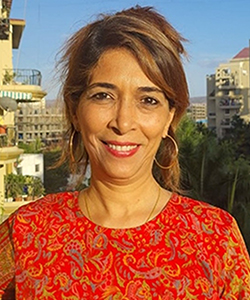
Ever since the ‘BSG for SDG’ initiative was launched in July 2021, I felt inspired and responsible to implement the SDGs in my immediate environment. I decided to contribute to my community through the conservation of forestland behind DPS School at Nyati County, Pune. When my son Sahil was a kid, we would often go to the quiet and lush green forestland with his friends for picnics. But lately I could see a lot of encroachment and waste being dumped around which was not only an eyesore but hazardous to residents. My initiative started with approaching an NGO, Anandvan, to conserve and beautify the forestland. Together we decided to take up various issues every Sunday.
On 2nd October 2021, I gathered a few volunteers and we demarcated an area as Anandvan5. With the help of the founder of Anandvan, we planted a few saplings. We intend to take it forward by planting more trees and making an artificial pond. By now we had formed a WhatsApp group and invited volunteers to join the cause.
Next, looking at our neighbourhood, we felt that there were few areas which were being turned into regular garbage dumps, leading to unpleasant smells, pollution, mosquito breeding and causing diseases in the midst of Covid. We tried our level best to educate the slum areas to avoid garbage dumping, and took up with PMC for regular garbage pickup and removal but it didn’t seem to work well. The garbage dump at Nyati Chowk was right at the entrance of my neighbourhood. SGI President Daisaku Ikeda says: “Unless we view things with our hearts, we can see nothing. But if we look at the world with a love of life, it will reveal its beauty to us.”
Centring myself on my mentor’s guidance, I realised I needed to view things with love and not with anger or hopelessness. I then came up with an idea to beautify this place which would hopefully completely stop the garbage dumping. After a few meetings with the area corporator we got our project approved and the work started. In a few weeks, the dumpyard turned into a beautiful seating and reading area with a newspaper stand. Now every time I go there, it gives me immense satisfaction and I express my gratitude to my mentor in my heart, expressing my appreciation for how he has always guided us towards creating value in society.
After this single action, many other activities have followed up, such as:
– Plogathon, where a group of people along with PMC workers cleared and cleaned a demarcated area and educated the shopkeepers to maintain cleanliness.
– The area opposite our residential society had bare walls with people spitting and spoiling them. Our group decided to get the walls beautified with wall art. At first, I thought this would be impossible to culminate; however, with a strong determination, anything is possible. Fortunately, our corporator again supported this cause and I approached a professional artist who is my friend and she agreed for volunteer work. We started our wall art project opposite Nyati Estate. We collected 65 volunteers of all ages and in 15 days we finished the entire wall with beautiful paintings which depict profound messages. The concept was – Life is Beautiful.
– We recently organised a free health camp and mobile photography for children to keep them busy in their spare time. These activities contribute towards the health and happiness of people.
I have many such SDG initiatives in mind and I am determined to implement them soon. As President Ikeda says, “Our aim is the happiness of each resident and the prosperity of the entire region.” (The New Human Revolution – a novel by Daisaku Ikeda, Vol. 19, p. 30)
 SDG Tip for Daily Life
SDG Tip for Daily Life

Not one, but 73 ideas to take inspiration from for community service projects – from donation drives to helping your neighbours, from teaching to fixing or making things for your local community!
Explore here
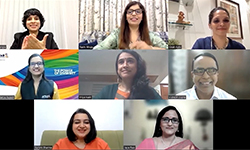
Updates
1. Second BSG Women’s Webinar held on 21st June 2022
The world is torn with conflict. SGI President Daisaku Ikeda urges us that “we must make the twenty-first century a “century of life”” – that is, a century in which the dignity of each life is respected, where greater attention is paid to the happiness and health of each life. He has often expressed his firm belief that women will play an “extremely important role… in realizing this kind of world.” And therefore, he insists that “a century of life must also be a century of women.”
BSG hosted its second annual women’s webinar titled ‘Towards 2030: The Power of Women to Build a Century of Life’ on 21st June 2022, to bring to light the powerful stories of some of the most incredible women from society, who shared their own journeys on how they are creating a century of life through their daily actions.
The panellists at the webinar included:Dr. Saundarya Rajesh, Founder–President, Avtar Group; Ms. Priya Naik, Founder–CEO, Samhita Social Ventures; Ms. Swati Apte, Founder–Director, The Arts Quotient; and Ms. Rashi Ahuja, Director–Head of External Relations, Bharat Soka Gakkai.
Read more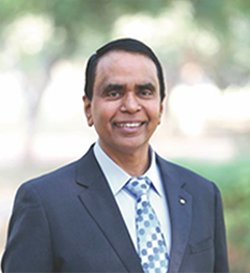
2. In Conversation with Mr Vishesh Gupta – Chairperson, Bharat Soka Gakkai – Business World
Bharat Soka Gakkai (BSG) Chairperson Mr Vishesh Gupta interacts with the Business World and shares about BSG – its work and various activities and initiatives undertaken by BSG. He shares his views on how we can build a resilient society post-Covid, how we can live in peace in these turbulent times, and much more.
Read here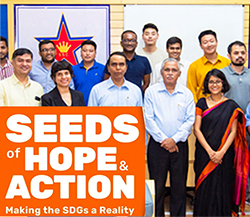
3. The first ‘offline’ ‘Seeds of Hope & Action’ (SOHA) exhibition held at St. Stephens College, Delhi University on 6th May 2022
The Seeds of Hope and Action (SOHA) exhibition is a joint initiative of the Soka Gakkai International (SGI) and the Earth Charter International. It introduces a positive vision for sustainable living that can contribute to the realisation of the Sustainable Development Goals (SDGs). Owing to the COVID-19 pandemic, this exhibition was being organised virtually by BSG in various institutes of India since 2021.
On 6th May 2022, for the first time an ‘offline’ SOHA exhibition was organised for working professionals pursuing the Young Leaders Fellowship Program at St. Stephen’s college in Delhi University. These youths were from India’s neighbouring countries including Bangladesh, Sri Lanka, Nepal, Bhutan, and the Maldives. Principal Prof John Varghese viewed the exhibition along with the group and expressed appreciation to BSG for the initiative and hoped that the takeaways from the exhibition and the Q&A would help the youth play a vital role as decision makers to take SDGs forward in their respective countries.
Read more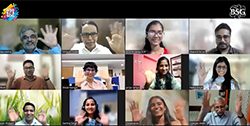
4. Mr. Niranjan Khatri, Founder, iSambhav, attended the 10th ‘BSG for SDG’ Day meeting held on 18th May 2022
The 10th ‘BSG for SDG’ Day meeting was held on 18th May 2022 to commemorate June 5th – World Environment Day. Its theme was: ‘Celebrating World Environment Day through Sustainable Human Behaviour’. The special guest for the meeting was Mr. Niranjan Khatri, Founder, iSambhav. Mr. Khatri talked about ISR – Individual Social Responsibility – how each individual has a responsibility towards the environment, towards building a world where the dignity of each life is respected. He shared various anecdotes from his personal life on how he was able to contribute towards protecting the islands of Port Blair from ecological destruction during the 1990s when he was working there in the hospitality industry, by adopting simple steps originating from imagination and creativity.
Contact Us
Any queries or suggestions regarding the newsletter can be addressed to sdg@bharatsokagakkai.org
To know more about the ‘BSG for SDG’ initiative, visit the BSG website
